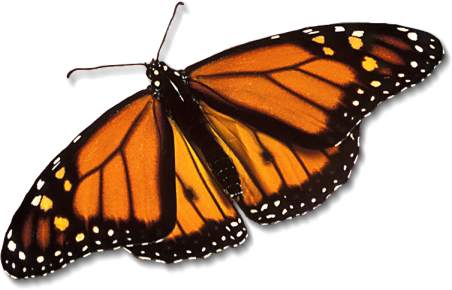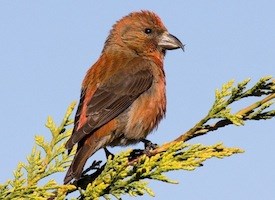I spend a lot of time hemming and hawing about invasive plants and how we should do everything that we can to prevent their spread.
There was a recent article in Time magazine promoting a new book by Jackson Landers titled: Eating Aliens: One Man's Adventures Hunting Invasive Animal Species. I realize he isn't talking about plants, but maybe that will be the next book on the market--I know you can make a mean Garlic Mustard pesto....
Check out the link to the Time Magazine article by clicking HERE. Note you have to be a member of Time to read the article online.
Of course, fall is right around the corner which means that we will be able to cut all of the Oriental Bittersweet to use in fall decorations (be sure not to let any of the berries reseed themselves!)
The Land Conservancy for Southern Chester County is a non-profit charitable organization based in Chester County, PA. Our mission is to ensure the perpetual preservation and stewardship of open space, natural resources, historic sites, and working agricultural lands throughout southern Chester County.
Monday, September 24, 2012
Monday, September 17, 2012
Migrating Monarchs
Many hawk watches throughout our area have been noting a high number of Monarch butterflies starting to migrate through. These unbelievable butterflies migrate in the winter. They weigh between .27 grams (small monarch) to .75 grams (large monarch) and over 100 MILLION monarchs migrate to either California or Mexico each year. Many do not survive the trip.

There are many places to watch the Monarch migration this fall, one of the most famous in our proximity is at the Cape May Bird Observatory. Check out this link that is starting to track monarch sightings across the country: http://www.learner.org/jnorth/maps/monarch_all_fall2012.html
Enjoy watching these amazing butterflies this fall, and plant your Asclepias to support them when they come back next spring!!

There are many places to watch the Monarch migration this fall, one of the most famous in our proximity is at the Cape May Bird Observatory. Check out this link that is starting to track monarch sightings across the country: http://www.learner.org/jnorth/maps/monarch_all_fall2012.html
Enjoy watching these amazing butterflies this fall, and plant your Asclepias to support them when they come back next spring!!
Thursday, September 13, 2012
Arachnophobes beware...
We're going to talk about spiders today.
Everyone always sees the brightly colored black and yellow spiders that make their webs in your plants and near your house so I thought I'd briefly discuss them. The Black and Yellow Argiope (Argiope aurantia) is the common yellow garden spider.
The females are typically larger than the males and they are known as common orb web spiders. This means that they spin their webs in a circle--not into names like Charlotte. The males build a smaller zig-zag shaped web on the outer layer of the females larger web. Each evening the spider will eat their web and then re-build it the next morning preferring a sunny spot. Dinner are the flying insects that get caught in their webs, most commonly: aphids, flies, bees, grasshoppers, and wasps.
I know some people have issues with spiders, but personally I think they can be quite pretty--except when I'm walking through a trail in the woods and get a spider web in the face. (this happens quite often because I'm usually a head taller than everyone else). Come to think of it, I'm sure it isn't pleasant for the spider either.
Everyone always sees the brightly colored black and yellow spiders that make their webs in your plants and near your house so I thought I'd briefly discuss them. The Black and Yellow Argiope (Argiope aurantia) is the common yellow garden spider.
The females are typically larger than the males and they are known as common orb web spiders. This means that they spin their webs in a circle--not into names like Charlotte. The males build a smaller zig-zag shaped web on the outer layer of the females larger web. Each evening the spider will eat their web and then re-build it the next morning preferring a sunny spot. Dinner are the flying insects that get caught in their webs, most commonly: aphids, flies, bees, grasshoppers, and wasps.
I know some people have issues with spiders, but personally I think they can be quite pretty--except when I'm walking through a trail in the woods and get a spider web in the face. (this happens quite often because I'm usually a head taller than everyone else). Come to think of it, I'm sure it isn't pleasant for the spider either.
Tuesday, September 11, 2012
Fun bird with the fall migration
 There was a sighting of a Red Crossbill in Chester County this week, just another unusual migrant that is coming into our area at this time. This bird is a stocky finch that eats cones as it's primary food source so it would be most often found near a coniferous forest or stand of trees. They have very usual beaks--which actually cross! There is an interesting article about the "irruption" (unusually high population numbers in strange places) predicted for this fall--given the sightings that are popping up, it is definitely happening. Check out this link: http://ebird.org/content/wi/news/recr2012 for more information about the Red Crossbills and their irruption, or just keep your eyes and ears peeled for the bird that is pictured.
There was a sighting of a Red Crossbill in Chester County this week, just another unusual migrant that is coming into our area at this time. This bird is a stocky finch that eats cones as it's primary food source so it would be most often found near a coniferous forest or stand of trees. They have very usual beaks--which actually cross! There is an interesting article about the "irruption" (unusually high population numbers in strange places) predicted for this fall--given the sightings that are popping up, it is definitely happening. Check out this link: http://ebird.org/content/wi/news/recr2012 for more information about the Red Crossbills and their irruption, or just keep your eyes and ears peeled for the bird that is pictured. Remember to keep your eyes to the skies and stay alert during migration periods--there is no telling what you may encounter!
Monday, September 10, 2012
Backyard Feeders
Judging from the large flocks of geese that I have seen flying overhead, the migrants that are popping up all over the county (and state), and the decidedly yellow hue to the trees I think it is safe to say that fall is just around the corner. This is a great time to pay close attention to what is at your feeder, and perhaps learn a little more about the habits of the birds at your feeder. Cornell Lab for Ornithology just released a video talking about some new banding techniques that will help us to find out what our birds do when they are not at our feeders. This video is informative, interesting, and fun (at least if you like birds). Check it out HERE.
Subscribe to:
Posts (Atom)
Popular Posts
-
I like to refer to bird (and mammal) box cleaning day as eviction day because you typically end up dislodging some mice who were making the...
-
The leaves are slowly starting to change colors and for the most part everyone's garden is waning in color. If you are looking at your ...
-
Stilt grass flowering--prime time for cutting The next two weeks provide you with the prime opportunity to gain control over the Japanese...
-
Spring cleaning should be on your "t0-do" list this weekend. I know it's seems early, but it is March, and I have seen bluebi...

.jpg)

